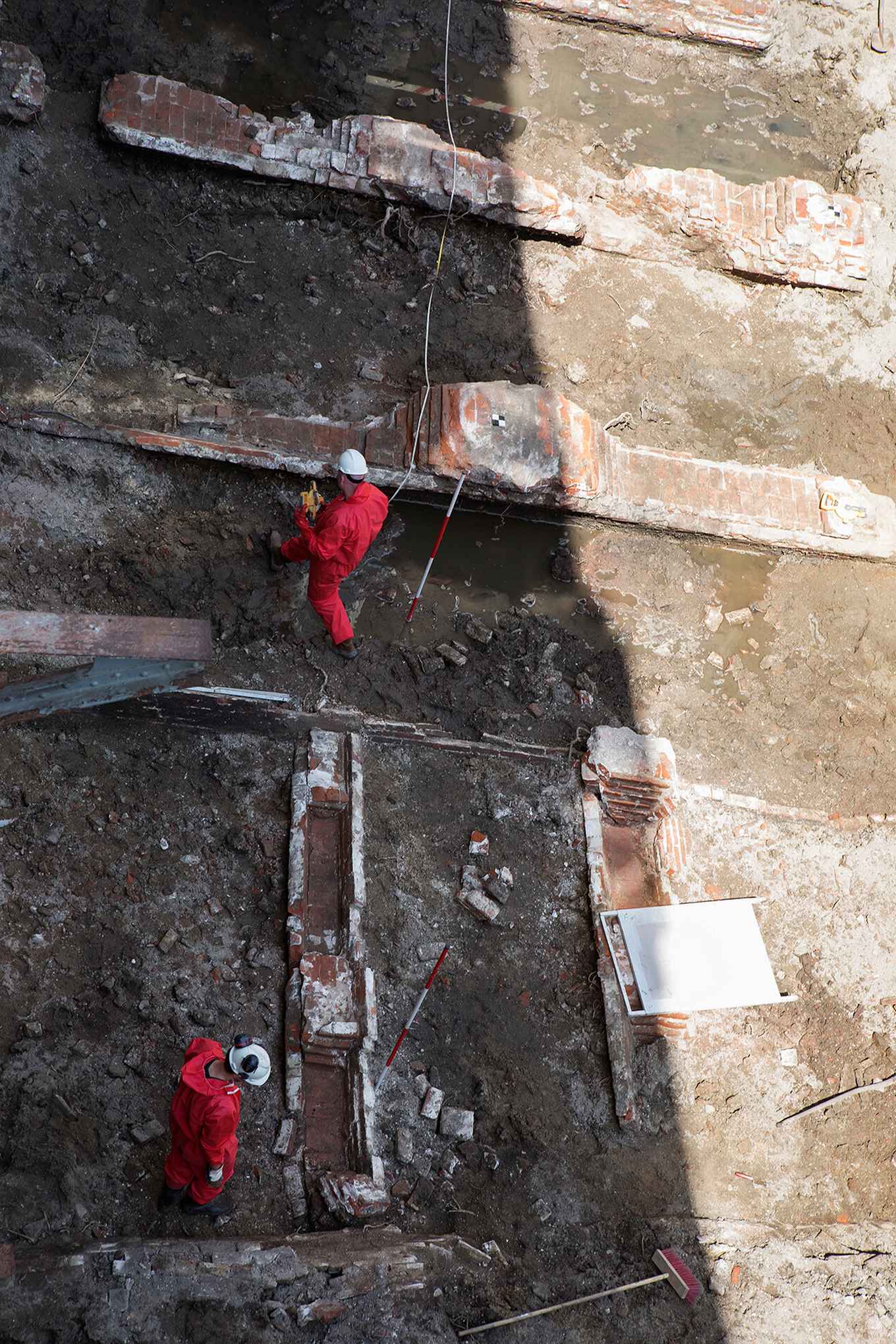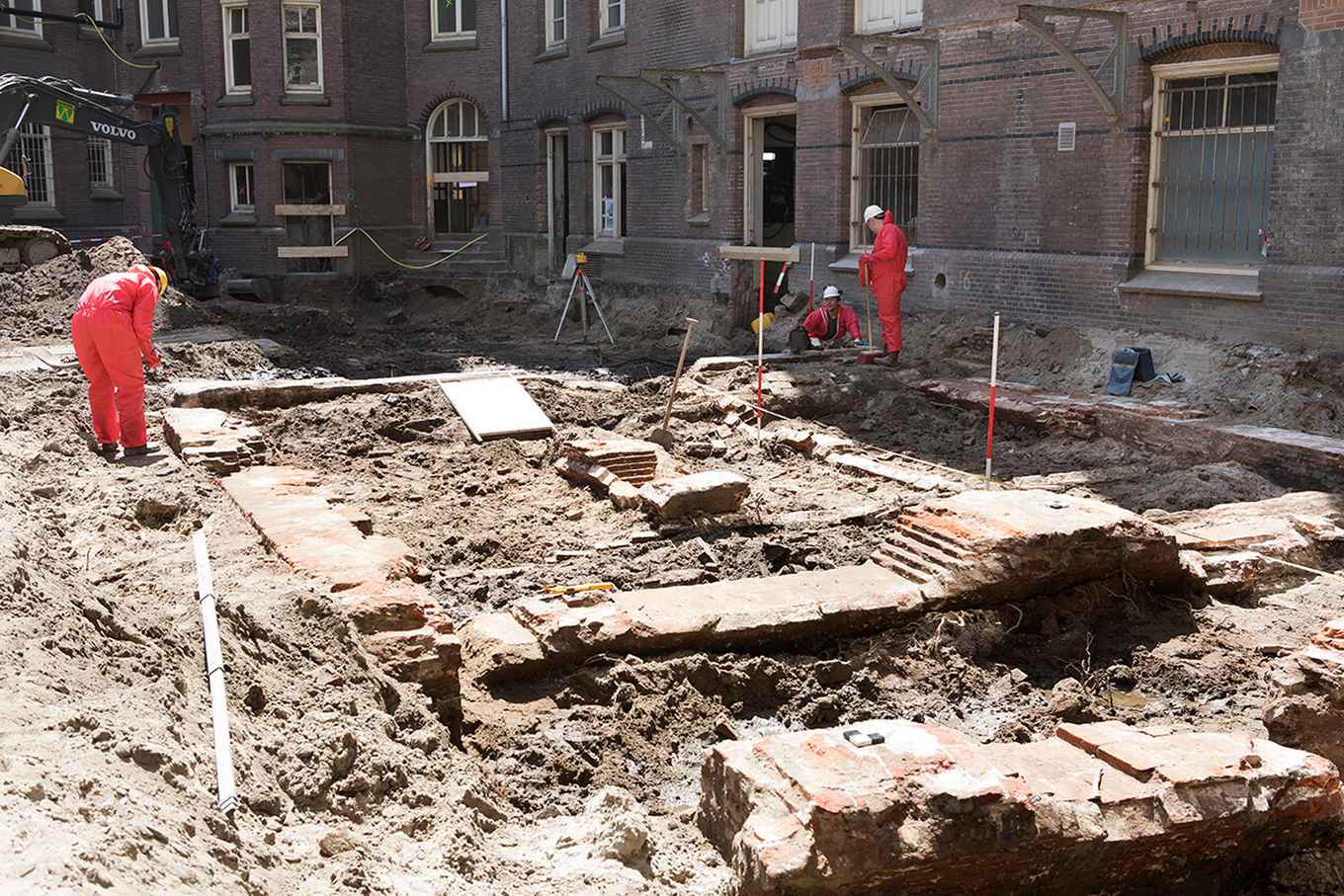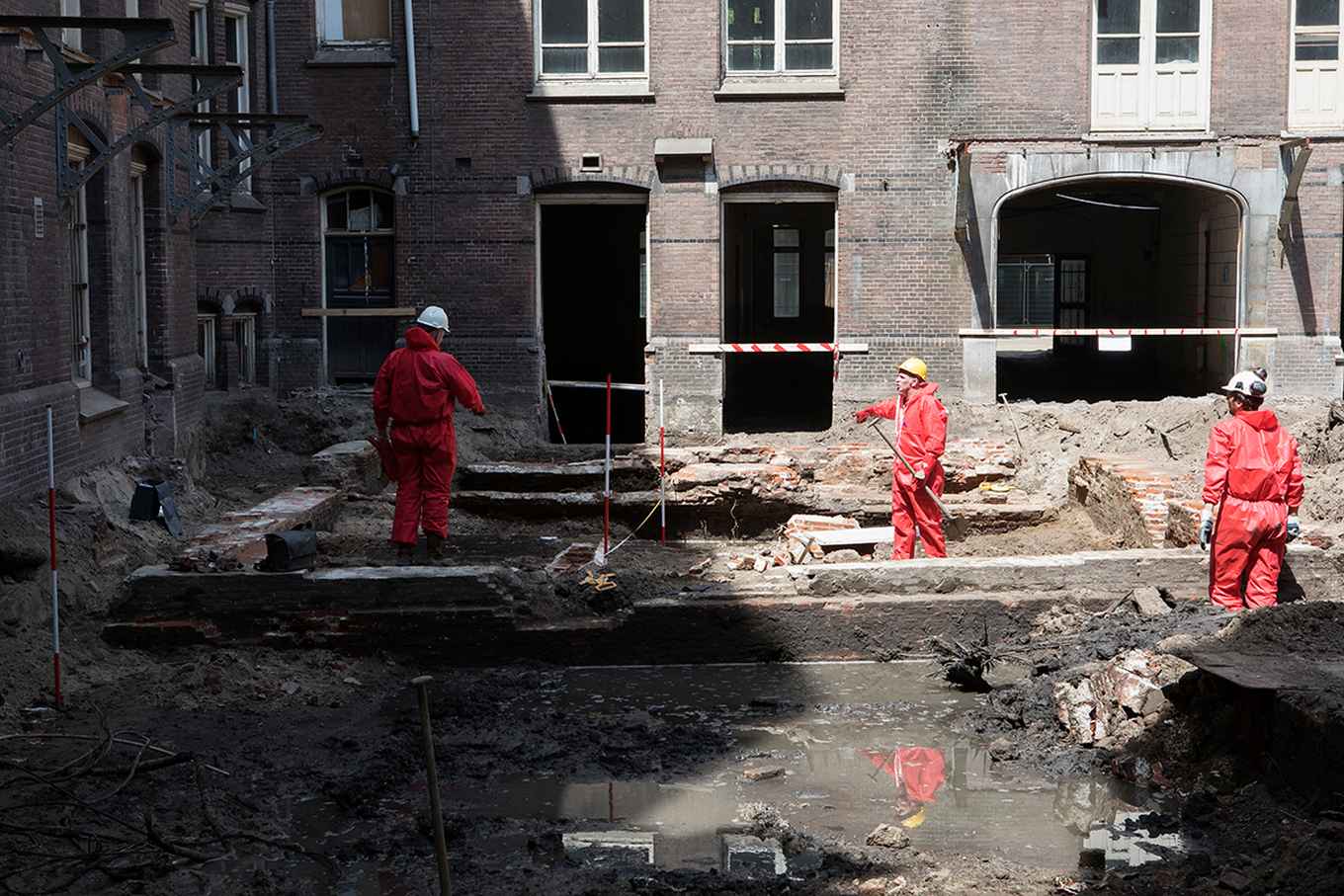Archaeological findings on University Library construction site
16 August 2019

History and excavations
From 1626 until 1897, this was the site of the 'Verbandhuys' (Bandages House), a department of surgery in the Sint-Pietersgasthuis, which subsequently became the Binnengasthuis. Aside from a handful of historical maps, little was known about the history of this building or how it was used.
The initial findings of the archaeological dig show that intensive renovations were carried out on site over the span of more than 250 years. Several cellar spaces with a sewer and a cesspool were left over from the early 17th century. The cesspool consisted of a brick-lined pit, which was used both as a toilet and for disposing of household waste. The finds consist of earthenware jugs, plates, chamber pots, ointment jars and a large number of tobacco pipes. They provide a unique glimpse into everyday life at the hospital between 1625 and 1650.
At some point during the mid-18th century, the complex was demolished and completely rebuilt. The new building featured a strong foundation with vaulting to support the stone floor of the infirmary and a new sewer system.
Cooperation between the municipality and the UvA
The research project offers a manifest opportunity to link municipal research to the UvA's educational programme, e.g. through the combined function of the MenA city archaeologist and the UvA professor of urban archaeology. Students from the UvA and VU Amsterdam's institute of archaeology, the Amsterdam Centre for Ancient Studies and Archaeology (ACASA), will have the opportunity to participate in preparing the finds, which is planned for the autumn.

